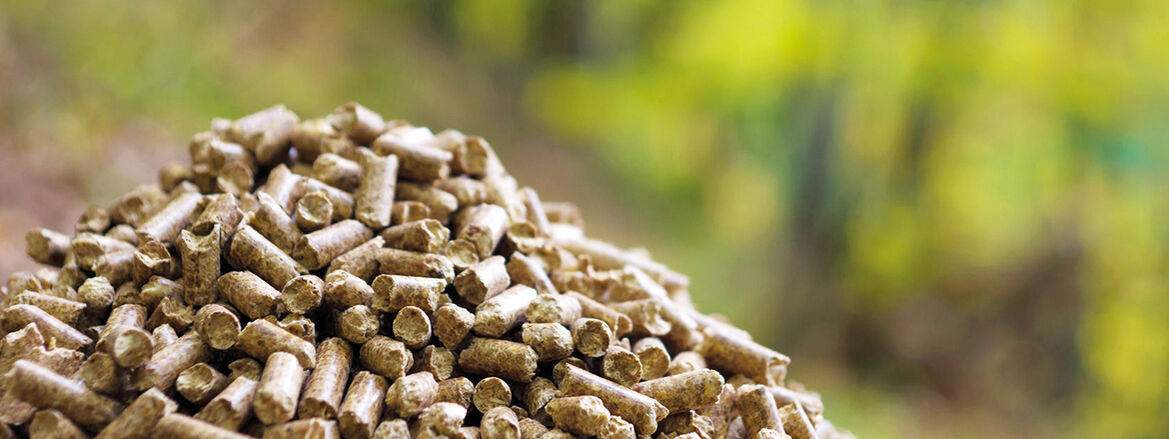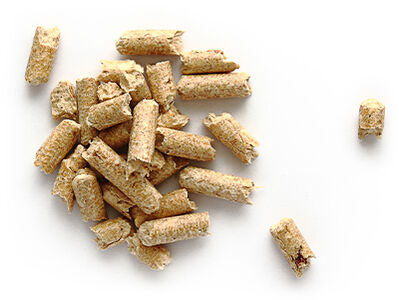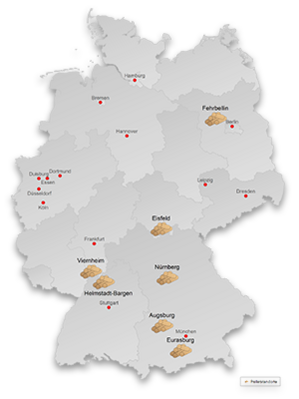The number of pellet-fuelled heating systems has almost doubled in Germany between 2012 and 2019. Nevertheless, wood pellets are still rather a niche in the market for heating fuels. Jörg Fellermann and Marco Rümper also know this because they are responsible at DS-Mineralöl for the wood pellets market segment. In this interview they explain why they have been successfully trading in wood pellets since 2004 and why their customer are mostly located in southern Germany.
Mr. Fellermann, Mr. Rümper, will we soon all be using wood pellets instead of fuel oil or gas to heat our homes - and is that even possible in this volume?
Rümper: Demand for wood pellets is growing every year, although not by much. Germans currently consume around 2.4 million tons of wood pellets per year. We have a production capacity of approximately 3.5 million tons across Germany. So that makes a capacity of 1.1 million tons that we have not even exhausted this yet.
In Germany we even have sufficient resources for 5 million tons of wood pellets, without having to fell even one additional tree. This is twice the current consumption.
Fellermann: I don’t think the comparison with heating oil or gas is always appropriate. For a while, many Germans were building fireplaces in their homes. So there is a market for 27 million cubic metres of firewood. And by that I mean real firewood. Then there is bad and good firewood with varying degrees of efficiency and cleanliness. Wood pellets, on the other hand, are always the same. As well as this, they are made from wood waste. The production of logs produces certain remnants such as tree crown wood, bark and other unusable parts of the tree: In this respect, I think it would be preferable for some consumers to switch from fire wood to pellets – but fireplaces are still prestige objects and consumers are loathe to replace them.
How would you describe the development in the market to date?
Fellermann: There have certainly been quite respectable growth rates in new installations of pellet boilers and stoves over the years. But still their share for the heat demand in Germany is rather small with about half a million systems. There is still room. In France, for example, around 150,000 new pellet stoves are currently being installed every year. In Italy it is even more than 170,000 per year. With more than 3 million tons, Italy is now the largest consumer market in Europe.
In view of the current Co² and climate debates, there is now more than ever a huge potential for wood pellet heating systems, from kilns to large-scale plants. This is because these systems help to achieve the goals that have been set.
Rümper: The addition in Germany is around 28,000 wood pellet plants per year, across all systems. With growth such as in Italy or France, we would once again make a significant leap forward and significantly improve our share of the heating market.
You say that wood pellets are always the same. Are there no differences in quality?
Fellermann: Yes, there are. The German Pellet Institute has developed a certification system and awarded us its Enplus seal of approval. It is based on the European minimum standard for wood pellets laid down in DIN EN ISO 17225-2. But this minimum standard is not enough for us. We are going one step further and seeking out suppliers with a particularly high quality. We are also a member of the German Energy Pellet Association, DEPV. In this way, we are able to share ideas with other wood pellet suppliers on the market.
So there are minimum standards and seals of quality, but what are the specific differences in the quality of wood pellets?
Fellermann: Countries like Spain have completely different raw materials. In Germany, we are spoiled by our coniferous forests. We have larches and spruces that burn very cleanly. These trees don’t grow in Spain. That’s why we need minimum standards for the input material. In the worst case, the heating system will break down if the fuel is of a poor quality. Wood pellets must have a certain length and must not crumble so as not to disintegrate as soon as they are blown in. The consistency of the wood pellets is crucial. And they also have to be clean, for example free of dust. This means that the storage of wood pellets is also important.
What is DS Group's core business in the wood pellets sector?
Fellermann: Our core business is the B2B sale of loose pellets to specialist fuel retailers, specifically for the heating market. We deliver large units of loose goods – bagged goods are not yet of relevance for us – and have been doing this for 15 years. Accordingly, our customer can purchase both petroleum and wood pellets from us. These days, companies trading in petroleum generally also offer wood pellets. Our original feeling was that if more and more people are using wood pellets for heating, we as energy traders need to be able to react – especially for the benefit of our existing customers.
What is so special about DS Group as a supplier and wholesaler?
Rümper: We have built up a nationwide network of our own warehouse locations and external capacities to ensure sustainable trade supply. We are thus closing the gaps between producer and consumer, for more comprehensive availability and greater security of supply. This also results in important synergies, both better capacity utilisation for production and warehousing as well as significantly more efficient logistics for the specialist trade.
As in the case of mineral oil or the Chemicals division, we need to be able to explain our product well. We have this know-how in sales. Our customers know where they stand when they order from us. This reliability is one of our strengths.
Where do the wood pellets sold by DS Group come from? After all, climate and environmental protection issues are currently paramount and wood pellets were once trees.
Fellermann: We source our pellets solely from residual wood produced in the sawmill industry. These are shavings, plane remains and other remnants, so-called “minced steaks”, which always accumulate. Or they are made from wood that can no longer be used in construction.
Rümper: We only buy German goods. We have very reliable suppliers in Germany who deliver good quality. The wood itself, i.e. the primary input product, also comes from Germany or the Czech Republic. So it has not travelled half way around the world on board a freighter. And in Germany we have had a positive forest balance for years. That means that we only harvest half of all the trees that grow back every year.
Mr. Rümper, Mr. Fellermann, thank you very much!







